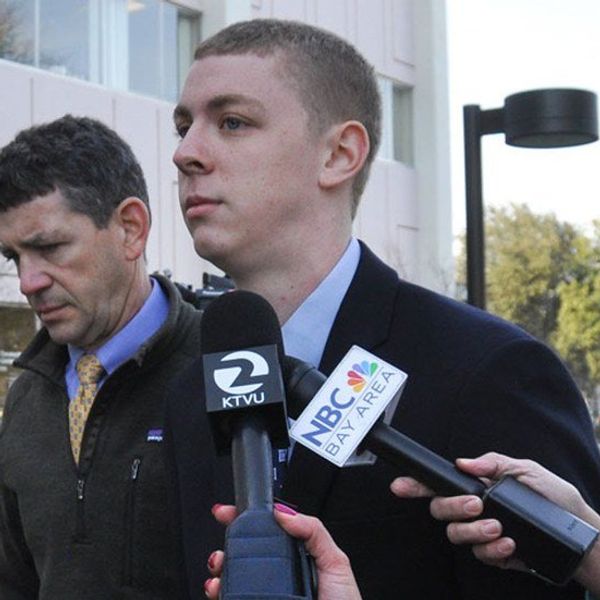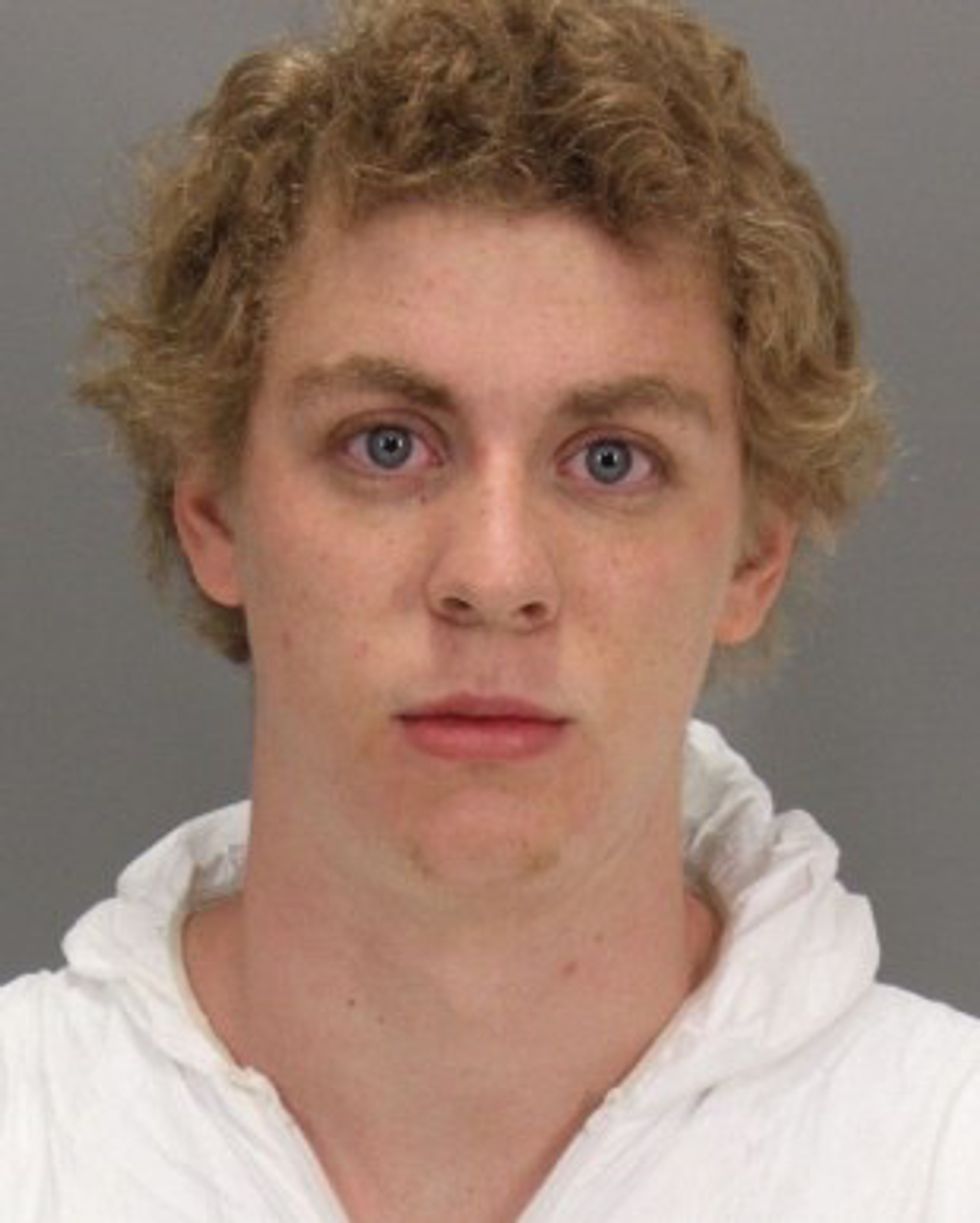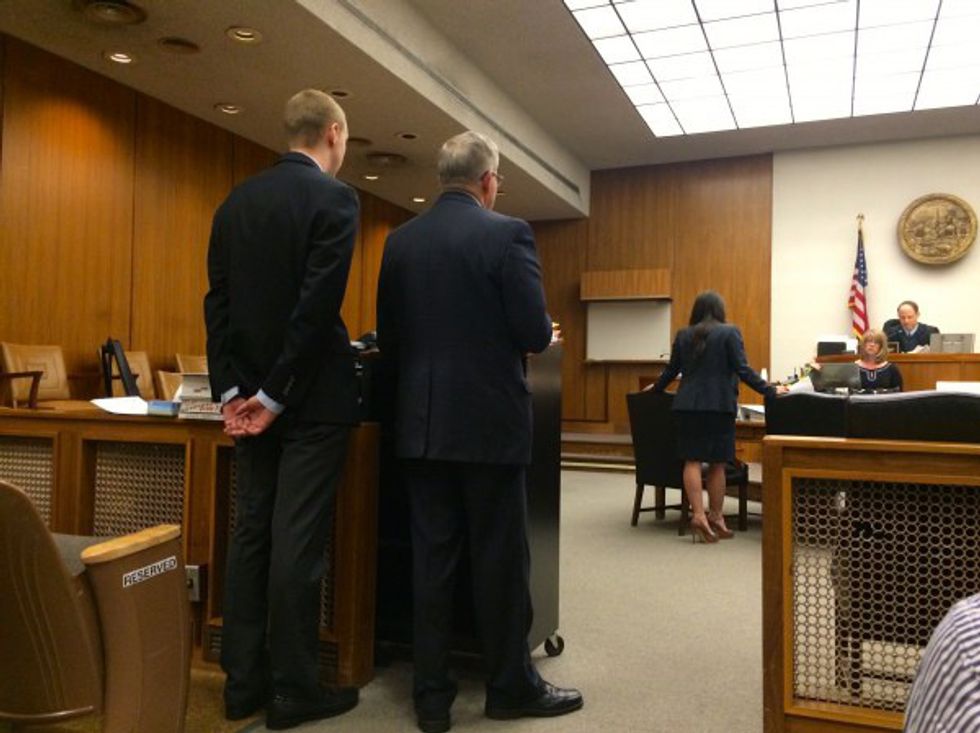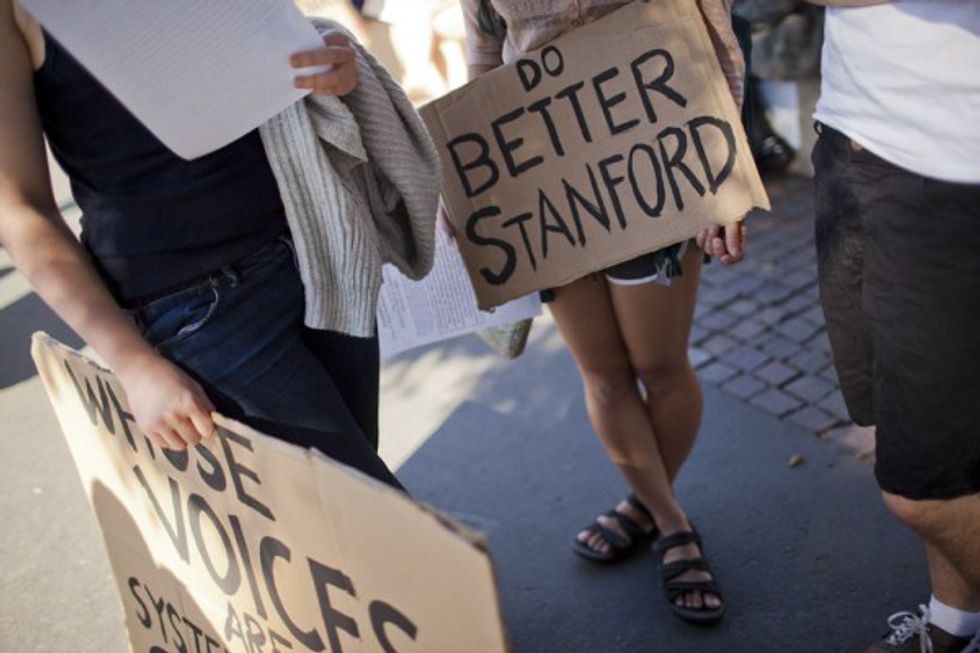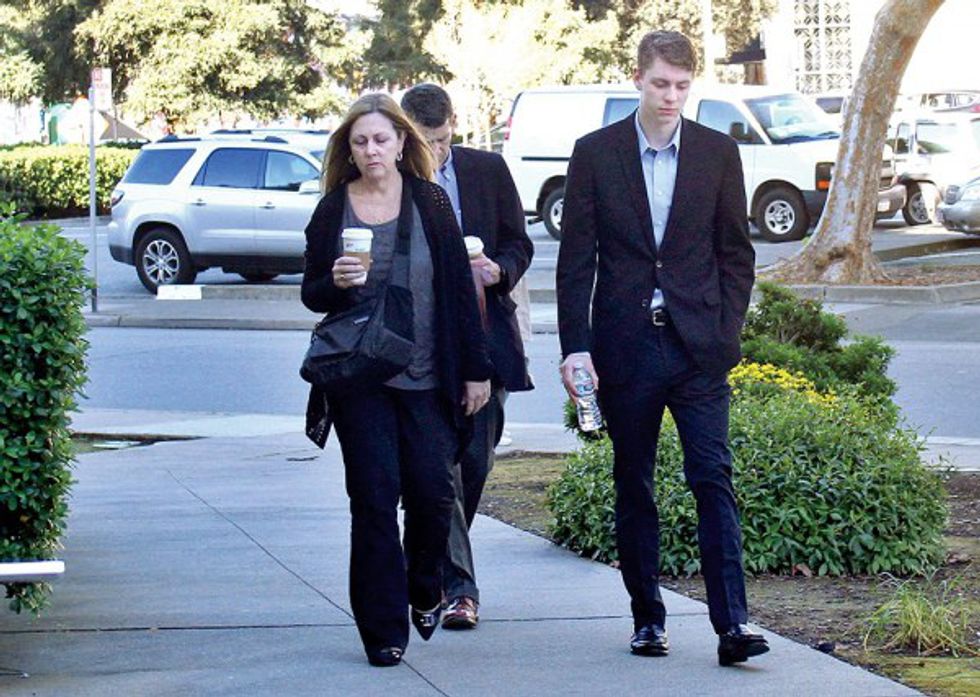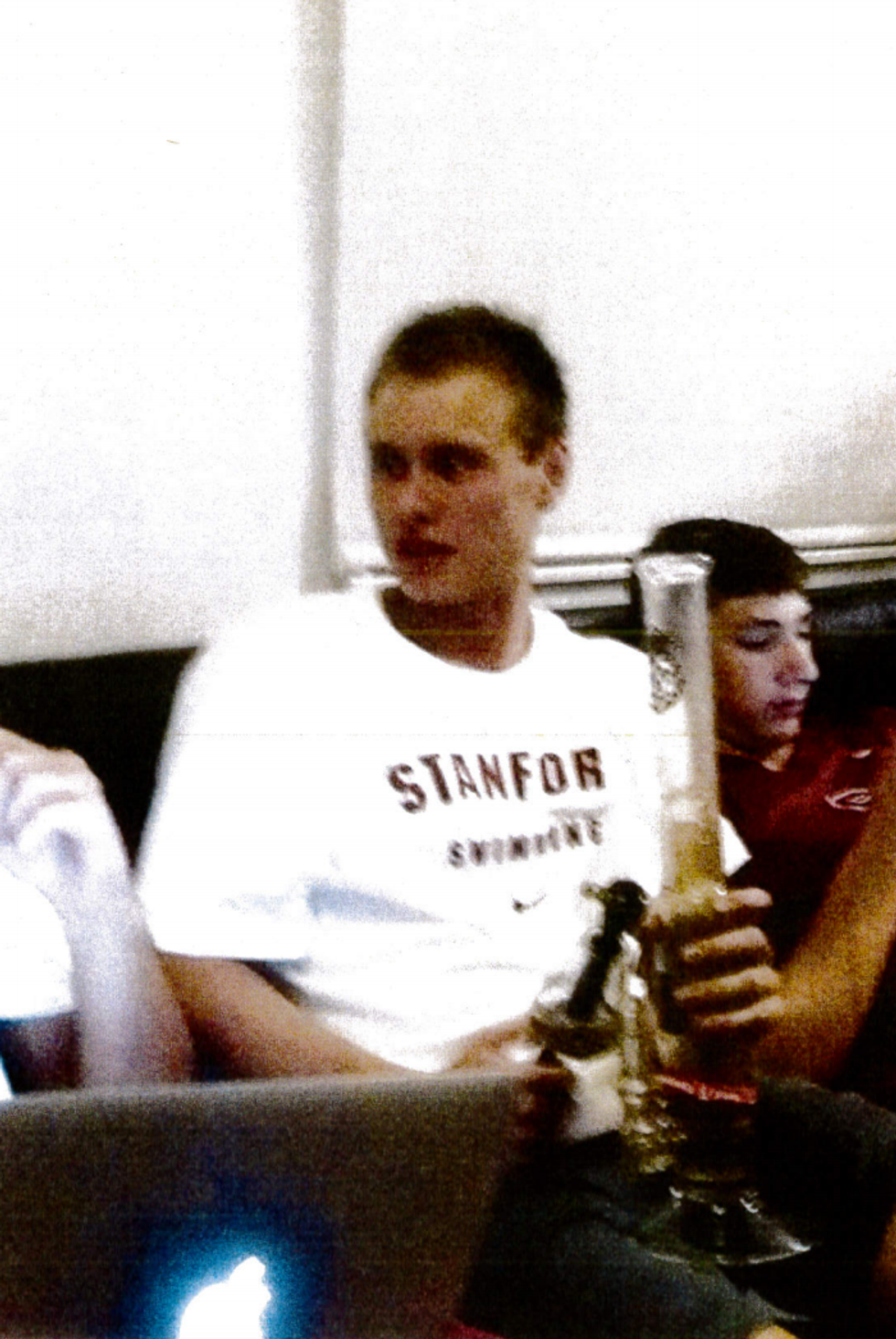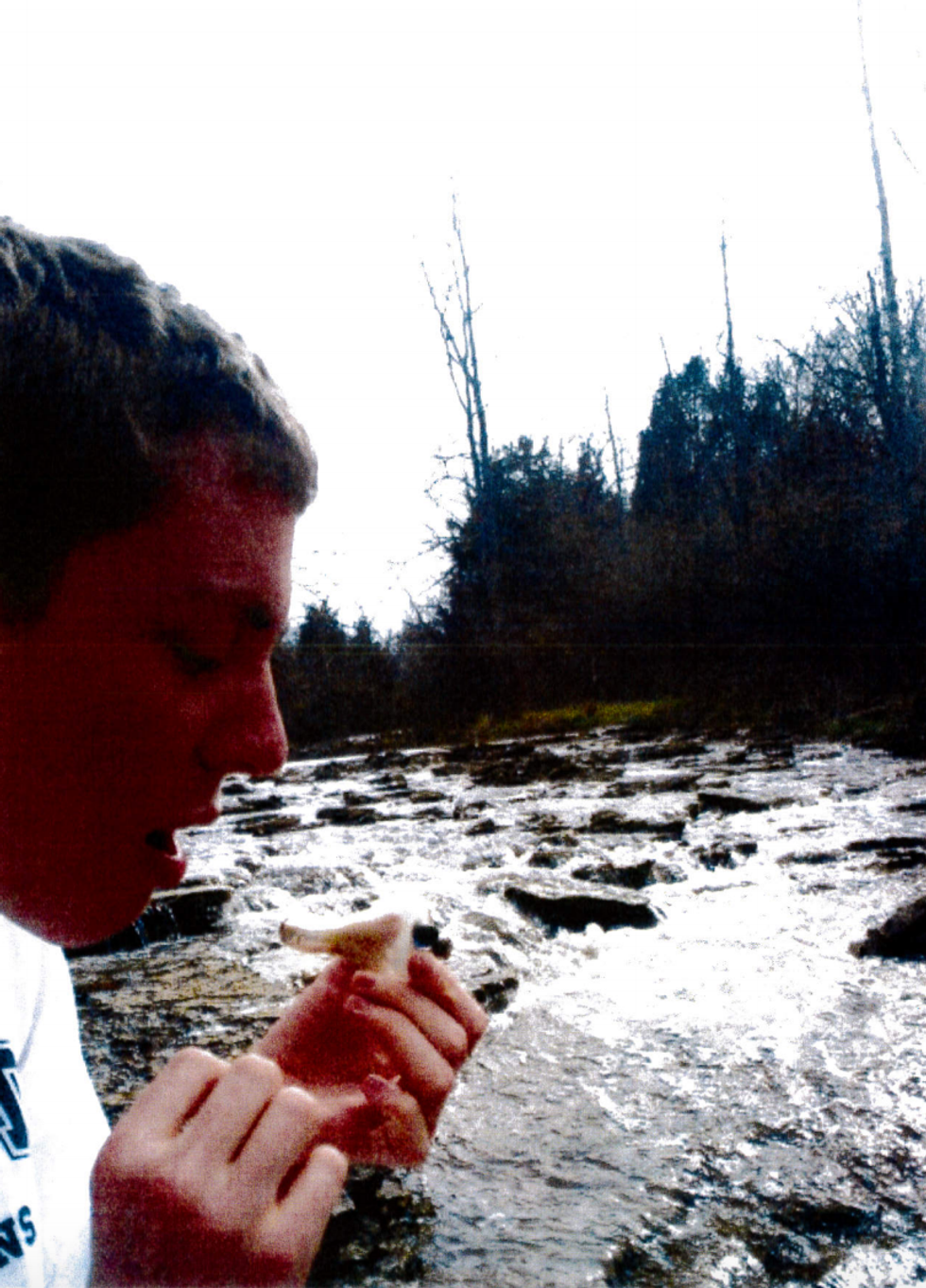I have followed the People V. Brock Turner Case rather haphazardly for the past few weeks. Like most, I received the majority of my information from Facebook shares and other social media sites. While the information was not incorrect, it was incomplete. I felt, and still feel, that it is my duty as a college student, a female and a human being living in the 21st century to review the case in its entirety. While many of us have read Emily Doe's (the Victim's name, changed by Palo Alto Online to protect her privacy) Impact Statement, Brock Turner's father's letter to Judge Aaron Persky, and perhaps several editorials related to the case, I believe it is necessary to educate ourselves on the entire trial from January 18, 2015 to present day. In addition to the emotion-filled testimonies that went viral, there are facts brought into question as well as both defense and prosecution strategies regarding the case that bring light to the "rape-" and "party-" cultures we live in today. In order to shed light on these ideas and help others become as informed as I have become in the past few days, I have collected articles from Palo Alto Onlinedating back to the week of the assault over a year and a half ago. That being said, this article is rather long and detailed. But, if you have made it this far into my article, I urge you: read on, educate yourself on the cultures we live in, question strategies and tactics, and most importantly, create a dialogue. I do, however, urge you against limiting this dialogue to this particular case. It is all too often college campus rapes and sexual assaults occur and too seldom they are reported. While the “Stanford Rape” and Brock Turner have become household names, Emily Doe and her case stand as a reminder of the countless unnamed women who have endured a similar hardship and hold it in silence. For the sake of these women, please read on and educate yourself on the epidemic of campus rape that is taking our nation by storm.
** However, the subject of rape and sexual assault can trigger emotional responses. “The Assault” portion of my article, as well as others, may cause this response, and I would like to warn against reading if you feel you may be susceptible to these feelings.
The Assault: Jan. 18, 2015
According to the police report, Deputies Taylor, Adams and Shaw were dispatched to the Kappa Alpha fraternity house in Stanford, California at 1:01 a.m. Arriving five minutes later, the deputies found Emily Doe unconscious and unresponsive but breathing behind a dumpster. Her “black, skin tight dress” was pulled up to her waist, “exposing her vagina and butt." Further, “she was not wearing any underwear." The police report notes her “long hair” as being “disheveled, knotted, and completely covered in pine needles.” She was in the fetal position with her “light grey sweatshirt removed from her left arm, but still on her right arm." Additionally, her bra appeared disheveled and her underwear was found “approximately six inches from her stomach."
While Deputies Taylor and Shaw were making sure Emily Doe was okay, an unknown male subject approached them stating that, “They have him pinned down over there…the guy who did that.” “They” were later identified as Peter Jonsson and Carl-Fredrik Arndt.
Upon approaching Jonsson and Arndt pinning Turner down, Deputy Shaw asked them to remove themselves, then placed handcuffs on Turner. Deputy Shaw noted that Turner, while smelling strongly of alcohol, appeared coherent enough to comprehend what Shaw was saying and comply with his requests. After detaining Turner and cornering off the crime scene, Shaw returned to where Emily Doe was found. Medical personnel were assisting her and she was still completely unresponsive and unable to answer any questions.
When questioned, the two men, Jonsson and Ardnt, gave their statements. The following is a rendition of Jonsson’s statement to Dep. Shaw.
The two men were riding their bikes to a party at the Kappa Alpha fraternity house when they saw what appeared to be a couple having sex. Jonsson noticed that the woman looked asleep or unconscious and that “something looked weird” about the situation. When approximately 10 yards away, Jonsson and Arndt got off their bikes and Jonsson said, “Hey.” According to Jonsson, Turner then “looked up, saw him, slowly got up off the female and began running ‘pretty fast’ away from the area." They asked Emily Doe if she was okay, but she was unresponsive. They chased after Turner and pinned him down for a few minutes until the officers arrived.
Emily Doe was transported to Valley Medical Center and regained consciousness at 4:15 a.m. She notified officers that she was not a Stanford University student. She was asked if she would be willing to go through a Sexual Assault Response Team (SART) procedure. She told officers she did not remember having any sexual interaction. Emily Doe’s impact statement, which I will review later, gives more details regarding what happened in the early morning of Jan. 18, 2015.
Palo Alto Online released an article the next week, Jan. 28, 2015, stating the following:
According to a campus report, early Sunday morning, Jan. 18, 2015, a male Stanford University student was arrested for attempted rape. A freshman athlete, the male student was arrested around 1 a.m. near the Kappa Alpha fraternity house, then transported to San Jose Main Jail and booked on two charges: attempted rape and digital penetration with a foreign object. He was released the same day after posting his $150,000 bail.
Palo Alto Online released a follow up article the following morning:
The Santa Clara County District Attorney’s Office filed five charges against the 19-year-old freshman and male-swimmer for Stanford University, Brock Turner: rape of an intoxicated person, rape of an unconscious person, sexual penetration by a foreign object of an intoxicated woman, sexual penetration by a foreign object of an unconscious woman and assault with intent to commit rape. The victim, Emily Doe, 22, is not a Stanford University student. Turner has since withdrawn from Stanford and is not eligible to re-enroll.
Catherine Criswell, Stanford University’s Title IX Coordinator, also released a statement regarding Jonsson, Ardnt and other unnamed witnesses: “Several students, both graduates and undergraduates, were up standers in this situation…They made the courageous decision to intervene and provide assistance. That is exactly the type of leadership and caring we attempt to cultivate in our community, and we commend those students on their courage and quick response."
Brock Turner Denies Alleged Rape: Jan. 30, 2015
After his name and accusation went public, Brock Turner, 19, denied all allegations he had been accused of. He said he had been at Kappa Alpha fraternity house, with his friend Tom Kremer, since about 11:00 p.m. According to the police report from the night of the crime, Turner had “hooked up with a few girls” throughout the night. By “hooked up,” Turner meant kissed. This was later confirmed by Tom Kremer. Turner met Emily Doe later on in the night at which point he has already consumed “seven cans of Rolling Rock beer and some Fireball,” which is a cinnamon flavored whisky. Turner says they drank beer together on the back porch of the house with Kremer and a few others. This is the last Kremer saw of Turner. Turner says he and Emily Doe started to kiss, but there is no statement in the report as to where the kissing began. Kremer did not mention Turner kissing Emily Doe on the porch.
Further, Turner says that he and Emily Doe walked away from the house holding hands and ended up on the floor kissing. He took off her underwear and fondled her while she allegedly rubbed his back with both hands. According to Turner, he consciously decided to engage in sexual activity with her and “she seemed to enjoy the activity." Emily Doe, on the other hand, does not remember kissing anyone or walking away from the fraternity house other than to go to the bathroom with her sister (for the purposes of privacy, Palo Alto Online has changed the sister’s name to Tiffany Doe). Emily Doe says she did not consent to any sexual activity.
Brock Turner stated, in the police report, that he did not get Emily Doe’s name and couldn’t really describe her. He also stated that “he would not be able to recognize [the victim] if he saw her again," “[his] intentions were not to rape a girl without her consent” and that “[he] just wanted to ‘hook up’ with a girl."
The Arraignment: Feb. 2, 2015
Former Stanford University swimmer, Brock Turner, 19, pleaded not guilty to five felony charges of sexual assault at his arraignment on Feb. 2, 2015. The judge presiding over the case is Judge Aaron Persky. Turner’s defense lawyer is Mike Armstrong of Palo Alto firm, Nolan, Armstrong & Barton. Deputy District Attorney Alaleh Kianerci is representing Emily Doe in the case.
At the arraignment, Judge Aaron Persky denied Armstrong’s request that Turner not be required to attend all court appearances. Judge Persky also filed a one-year protective order preventing Turner from contacting Emily Doe or coming within 100 yards of her person.
If convicted, Turner faces 10 years in prison.
After the arraignment, Kianerci—who works with the county’s sexual-assault unit—gave reporters an eye-opening statement: "When we hear the word 'rape,' we often think physical force…Rape is more often the thievery of the body and dignity of a woman, taken by offenders who believe no one will know and no one is looking. These types of sexual assaults happen on campuses, at parties all across the country. Sadly, they often go unreported or worse, we're not able to proceed on these cases. Luckily for the victim in this case, there were two good Samaritans who were at the right place at the right time, and more importantly, they did the right thing—and that's the message that needs to be sent to the community…don't just stand by if you see something inappropriate. If you see something, say something."
Preliminary Hearing: Oct. 5, 2015
At the preliminary hearing for the alleged assault of Emily Doe by Brock Turner, Emily gave an emotional testimony about what she recalls happening that night. Her sister, Tiffany Doe, as well as the witnesses to the crime, also testified.
For the purpose of eliminating redundancy, I have withheld the majority of Emily Doe’s testimony as I will later review her impact statement. However, it is important to note that Emily Doe and all involved had to endure the retelling of these events several times throughout the trial.
Kianerci’s questions walked Emily Doe through her actions on the day of Jan. 17, 2015 and night of Jan. 17/18, 2015. Emily Doe describes being reluctant to attend a college fraternity party as she is an older college graduate and had never attended a fraternity party at her college. However, she ended up attending because wanted to spend time with her younger sister. Before leaving for the party, Emily described her intoxication as becoming “buzzed” and “silly” yet completely in control.
Tiffany Doe testified to her friend finding a closed and full bottle of vodka at the fraternity house and pouring a drink for her sister. Tiffany did not drink any of the vodka. Emily described her level of intoxication after the vodka as “so drunk that I didn’t even know I was drunk.”
Both girls testified to drinking beers with three men, one of whom both Tiffany and Emily identified as Brock Turner, on the back porch of the Kappa Alpha fraternity house. Emily said she never directly interacted with Turner. Tiffany, however, testified that Turner, at some point after they had met, grabbed her waist and tried to kiss her. Turner, later, attempted to kiss Tiffany “out of the blue” once more. Tiffany, however, never felt unsafe and she described the incidents as “[feeling] like what can happen at a college party." Emily Doe says she does not remember talking to anyone or ever going back inside after drinking part of her beer with Turner on the porch.
Kianerci and Armstrong also questioned Jonsson, clarifying his actions for the night of Jan. 17/18, 2015.
At the time of the preliminary hearing, there was immense controversy regarding sexual assault at Stanford. Catherine Criswell, the previous Title IX coordinator, recently resigned and the university stood without a permanent and dedicated Title IX coordinator. A campus survey administered this same week revealed that “one-third of Stanford’s undergraduate women experience sexual misconduct” and “4.7 percent of female undergraduates had during their time at Stanford been sexually assaulted.”
Trail Begins: March 14, 2016
People v. Brock Allen Turner began on March 14, 2016 over a year after two Stanford graduate students found Brock Turner on top of an unconscious woman behind a dumpster near the Kappa Alpha fraternity house. Two of Turner’s five felony charges of sexual assault were dropped: rape of unconscious person and rape of intoxicated person.
Turner is represented by Michael Armstrong. Deputy District Attorney Alaleh Kianerci represents the Emily Doe.
Opening Statements: March 17, 2016
The trial continued with opening statements later that week, on March 17, 2016, according to court documents. Michael Armstrong and Deputy District Attorney Alaleh Kianerci gave opening statements to a jury of four women and eight men, as well as to the two alternating jurors, both men.
Armstrong’s opening statement once again reiterated Turner’s innocence. Armstrong noted that while many will testify to the events leading up to and after the alleged sexual assault, Turner is the only person who can testify what happened between himself and the young woman:
"Brock Turner will testify and he can tell you everything that happened from the very beginning of the evening all the way through after being found on the ground with Doe," Armstrong said. "He will tell you exactly what happened in terms of how much he drank, everything that happened during the time he was with her at the Kappa Alpha fraternity house, when they left together and everything that happened. He will answer every question that anybody here has about that."
Further, he asked the jurors to keep in mind that all witnesses had consumed alcohol at some point in the night and that no one possessed the ability to recount the entire period of time, “except Brock Turner."
Kianerci told jurors that it was their key duty to decide whether or not consent had been given and whether or not Emily Doe was in a condition to give it. She also told the jurors that one of the men whom will testify could notice Emily Doe’s unconscious state from more that 10 yards away. Additionally, she added that the instincts of this good Samaritan:
“was to help her, not to try to rape her, not to sexually assault her, but to help her because she was helpless. The evidence will show that there was one man on the night of the 18th that took advantage of Doe—a man who is sitting right over there," Kianerci said, as she pointed to Turner, "and his name is Brock Turner. You will hear that as he was confronted by these two men who intervened because what they saw was a helpless woman underneath Mr. Turner, his instinct was to get up, back away and bolt. He ran away, leaving a half-naked Doe on the ground."
Finally, she asked the jurors “to hold [Turner] accountable…I'm going to ask you to find him guilty and hold him accountable for taking advantage of (Emily) Doe when she was helpless and incapable of giving consent."
Alleged Victim, and Others, Testify: March 17, 2016 and March 18, 2016
Kianerci continued, Thursday, with showing the courtroom and jurors pictures taken from the night of the assault. They pictured Emily Doe, now 23, curled into a fetal position, unconscious in a pile of pine needles next to a dumpster. In addition, images of her transportation to the hospital, of her underwear and cellphone laying near her unconscious body, and images from the hospital were shown. Throughout the string of images, taken over the span of three hours, Emily Doe remained unconscious.
According to the court documents, Kiancerci also played for the court a recording of a voicemail Emily Doe left for her boyfriend at 12:16 a.m. on Saturday, Jan. 18, 2015. In the recording, Emily Doe’s speech was slurred, slow and unintelligible. Kianerci said powerfully, "That is how Doe was presenting to the outside world at 12:16 (a.m.)."
Further, Emily Doe, her sister, Tiffany Doe, Sexual Assault Response Team (SART) nurse and Carl Ardnt will testified over the course of these two days.
Emily Doe testified to what she had done earlier that Saturday. She recounted going for a hike, eating at a local restaurant and eventually deciding to go to a fraternity party with her younger sister and two of her sister’s friends. She described how much alcohol she had consumed before leaving for the party and her intoxication level as “buzzed” and “silly." Later in the night, she said her buzz went from “silly” to “very out of it” and “not articulating much." Her last memory was on the back porch of the fraternity house with three men, one of which she identified as Turner. She, however, did not remember meeting Turner.
In addition, she read a portion of her 12-page impact statement, which she submitted in full to Judge Aaron Persky, to the court. While the entire statement is incredibly important and I urge you to read it in its entirety, for the purpose of my article, I will paraphrase and quote where I find effective:
Emily Doe began by asking permission to address the defendant, Brock Turner, directly for the majority of her statement.
“You don’t know me, but you’ve been inside me, and that’s why we’re here today.”
After eating dinner with her younger sister, who was visiting her for the weekend, Emily Doe planned on staying at home by herself, watching TV and reading while Tiffany Doe went to a party with her friends. Then Emily Doe changed her mind and decided that her sister was only in town for the weekend and that she had “nothing better to do." So they went, to a “dumb party ten minutes from [her] house."
“I made silly faces, let my guard down, and drank liquor too fast, not factoring in that my tolerance had significantly lowered since college.”
The next thing Emily Doe remembers was waking up in a gurney in a hallway. She had dried blood and bandages on the backs of her hands and elbows. A deputy explained to her that “[she] had been assaulted."
“When I was finally allowed to use the restroom, I pulled down the hospital pants they had given me, went to pull down my underwear, and felt nothing. I still remember the feeling of my hands touching my skin and grabbing nothing. I looked down and there was nothing. The thin piece of fabric, the only thing between my vagina and anything else, was missing and everything inside me was silenced.”
With the little information she had gathered, still uncertain as to why she was shedding pine needles, she was asked to sign papers that said “Rape Victim." Her clothes were confiscated and she stood naked while SART nurses “inserted {swabs] into [her] vagina and anus” pricked her with “needles for shots” gave her “pills” and “pointed [a Nikon] right into [her] spread legs.”
“I stood there examining my body beneath the stream of water and decided, I don’t want my body anymore. I was terrified of it, I didn’t know what had been in it, if it had been contaminated, who had touched it. I wanted to take off my body like a jacket and leave it at the hospital with everything else.”
With as little information as having been “found behind a dumpster, potentially penetrated by a stranger, and that [she] should get retested for HIV because results don’t always show up immediately,” Emily Doe was released and told to “go home and get back to my normal life.”
Emily continues to explain how she received more information on the subject via an article online, how she told her family and boyfriend, and how she began to cope with what happened to her. In preparation for the trial, a year later, Emily Doe was warned in case they didn’t win.
“Worst of all, I was warned, because he now knows you don’t remember, he is going to get to write the script. He can say whatever he wants and no one can contest it. I had no power, I had no voice, I was defenseless.”
Once again, I have not done justice to this brave woman’s statement, and I urge you to read it in its entirety.
In addition to Emily Doe, Kristine Setterlund, the SART nurse on Emily’s case, was called to testify. Setterlund has been a SART nurse since 1987, preformed over 700 SART exams and testified as an expert in several court cases. She is trained to look at evidence and set emotions aside, although in her line of work this can prove incredibly difficult. Setterlund testified that there was “significant trauma,” including “penetrating trauma,” but could not conclude what caused it.
Kianerci asked Setterlund, "Did the injuries, for the lack of a better term, speak for themselves?" Setterlund responded, "Yes, they did."
Prosecution and Defense Strategies Emerge: March 18, 2016
In every court case, both the prosecution and defense use tactics and strategies to convince the jury one way or another. Days after the trial, these strategies became public and I have complied them here.
One of the key facts both the defense and prosecution used was the effect of alcohol on both Turner and Emily Doe. Kianerci called Alice King to the stand. She is the supervising criminalist for the Santa Clara County crime lab's toxicology unit and was called to testify to the Blood Alcohol Content (BAC) of both the victim and Turner.
The blood of Emily Doe and Brock Turner was taken at the hospital hours after the assault. King “back extrapolated” their BAC’s to the time of the assault. According to King’s calculations, Emily Doe’s BAC was 0.241 or 0.249. She had been given IV fluids which dilute her blood to an extent and therefore her BAC could have been higher at the time of the assault. Regardless, her 0.241 or 0.249 is over three times the legal limit of 0.08 in California. Turner’s BAC was calculated to be 0.171 at the time of the assault, still two times over the legal limit in California.
King also testified that someone with Doe’s level of alcohol in their system could experience symptoms that “include loss of large muscle coordination, slurred speech, staggering, unable to wake or stand, sleepy and ‘total confusion.’”
In a cross-examination of King, Armstrong reminded the jury that the symptoms do not fit neatly into categories and different symptoms can affect different people, differently. In addition, he questioned King about the effects of being “black out drunk” and she could not conclude whether this happens at a specific BAC, but that it can lead to memory loss.
DNA evidence was also brought into play. Emily Doe’s DNA was found Turner’s right and left fingernail as well as his right finger shaft. All of these were “brown-red stained,” indicating the possible presence of blood.
Armstrong also questioned Doe about statements she had previously made about “partying in college” and blacking out as well as asking if her phone was set to ring audibly throughout the night. This line of questioning shed light on the “party-culture” associated with college and Armstrong’s attempted blame of this culture for his client’s actions.
More evidence, including text message and pictures, were analyzed after Brock Turner Testified in court on March 23, 2016.
Turner Testifies and more evidence: March 23, 2016
Brock Turner, now 20, testified in court Wednesday, March 23, 2016 that the sexual interactions between himself and Emily Doe were in fact consensual. In addition, he testified that she was conscious, awake and responsive throughout their interactions and met his actions with rubbing his back with both hands.
Kianerci once again referred to pictures of Emily Doe unconscious on the floor and referred to her testimony stating she was “black out drunk." In response, Defense attorney Michael Armstrong called an expert witness who testified that someone who is blackout drunk can be walking, talking and making "voluntary decisions." However, their brain does not store memories of what they're doing due to their level of intoxication.
Additionally, Brock testified that "coming from a small town in Ohio, I had never really experienced celebrating or partying that involved alcohol." He also wrote in his letter to the judge, "Living more than 2,000 miles from home, I looked to the guys on my swim team as family and tried to replicate their values in how they approached college life."
Kianerci met Turner’s claim to have never experienced alcohol or drugs in a party environment with several pictures and text messages dating back to high school. There are text messages referring to “bong-hits," “wax," “acid trips” and “raging” that directly contradict Turner’s testimony.
Brock Turner’s statement was also released. In this statement, which I urge you to read, Turner blames “party-culture” and alcohol for his actions. He states that “[he] can never go back to being the person [he] was before that day." He admits to “the thought of [the assault] [being] in [his] head every second of every day since this event has occurred. These ideas never leave [his] mind.”
“I’ve lost two jobs solely based on the reporting of my case. I wish I never was good at swimming or had the opportunity to attend Stanford, so maybe the newspapers wouldn’t want to write stories about me.”
In addition, he rarely refers to the sexual assault directly and often interchanges this phrase with “sexual promiscuity." He fails to exhibit, in the words of Emily Doe, “sincere remorse or responsibility for his conduct."
Below is Emily Doe’s response to Turner’s statement:
"Your damage was concrete; stripped of titles, degrees, enrollment…My damage was internal, unseen, I carry it with me. You took away my worth, my privacy, my energy, my time, my safety, my intimacy, my confidence, my own voice—until today."
Character Witnesses for Brock Testify: March 25, 2016
On March 25, 2016 witnesses in defense of Turner were allowed to testify. Many of these character witnesses took the form of letters from his family and friends. The most shocking was a letter from Turner’s father.
In this letter, Turner’s father seems to take a shallow approach to the situation:
“Brock has always enjoyed certain types of food and is a very good cook himself. I was always excited to buy him a ribeye steak to grill or to get his favorite snack for him. I had to make sure to hide my pretzel chips because I knew they wouldn’t be around long after Brock walked in from a long swim practice. Now he barely consumes any food and only eats to exist.”
In addition to these remarks, Turner’s father states that the changes to his life are a “steep price to pay for 20 minutes of action in his 20 plus years of life."
Turner’s father spoke on behalf of his son, yet his approach caused nationwide outrage.
Case Goes to Jury: March 29, 2016
Both Armstrong and Kianerci made closing statements on March 29, 2016 before the jury.
Armstrong stated that, "her sister said she was fine, so she wasn't worried about leaving her there. Who knows her better than her sister?"
Kianerci stated, "It's what you do in the dark that puts you into the light…Brock Turner made a series of decisions in the darkness ... all in an effort to please himself. It didn't matter to him whether she was willing. What we do know is that he wouldn't have stopped if it wasn't for those two heroes… [Turner] is able to write the script because she has no memory. But just because he wrote the script doesn't mean that ... knowledgeable jurors have to believe it."
Judge Aaron Persky also made a closing statement to the jury while delivering juror instructions: “ If Turner believed she was conscious of the act—whether or not she was—then he did not have the mental state of committing the crime and the jury must find him not guilty."
Jury Finds Turner Guilty: March 30, 2016
The jury deliberated for two days inside a Palo Alto courthouse and returned with a guilty verdict on all three charges.
According to Palo Alto Online: “The judge has a sentencing range to choose from, and Turner faces two, four or six years in prison for count one; and three, six or eight years in prison for each of the other two counts.”
District Attorney Jeff Rosen made the following statement regarding the guilty verdict:
"We need to change the culture, and it's on all of us to do that. Today, the Santa Clara County jury gave a verdict, which I hope will clearly reverberate throughout colleges, high schools and everywhere in our county. And I want there to be no doubt of the distinction between consensual sex and sexual assault…'No' means 'no.' Drunk means 'no.' Passed out or unconscious means 'no.' And sex without consent means criminal assault."
Turner is Sentenced: June 2, 2016
Judge Aaron Persky sentenced Brock Turner to six months in county jail and three years of probation. Persky says that this sentencing acknowledges the “devastation” of the victim and the “severe” impact prison would have on Turner. Additionally, Persky said that the difficult criminal proceeding as well as the social media this case has receive has “poisoned” all involved.
Persky said: "The question that I have to ask myself is ... Is state prison for this defendant an antidote to that poison? Is incarceration in prison the right answer for the poisoning of (Emily Doe’s) life?" He concluded that it is not.
Turner plans to appeal his conviction with the help of Dennis Riordan, a well-known San Francisco appellate attorney.
Emily Doe urged urged Persky to deny probation and send Turner to state prison. She argued that "the fact that Brock was a star athlete at a prestigious university should not be seen as an entitlement to leniency, but as an opportunity to send a strong cultural message that sexual assault is against the law regardless of social class."
Judge Aaron Persky was a star-athlete, captain of Men's Lacrosse at Stanford himself, according to a 2002 article.
District Attorney, Jeff Rosen's, Response: June 2, 2016
District Attorney Jeff Rosen held a press conference on the steps of the courthouse after the sentencing. In this press conference, which I urge you to read on his website, Rosen made an eye-opening remark: “Campus rape is no different than off-campus rape. Rape is rape. We will prosecute it the same.”
He is one of the many who have reacted strongly to the sentencing and the case in general. Below, I have attached a list of a few reactions and editorials responding to this case. I know I have “urged” you to read several additional articles related to this case, however, these are different. These are the reactions of those not involved: readers like you and me, college students, professors, attorneys and many others. These reactions show just how many people are affected by cases like these. They show the outrage, the sympathy and even the empathy within our community. They are important as well.

